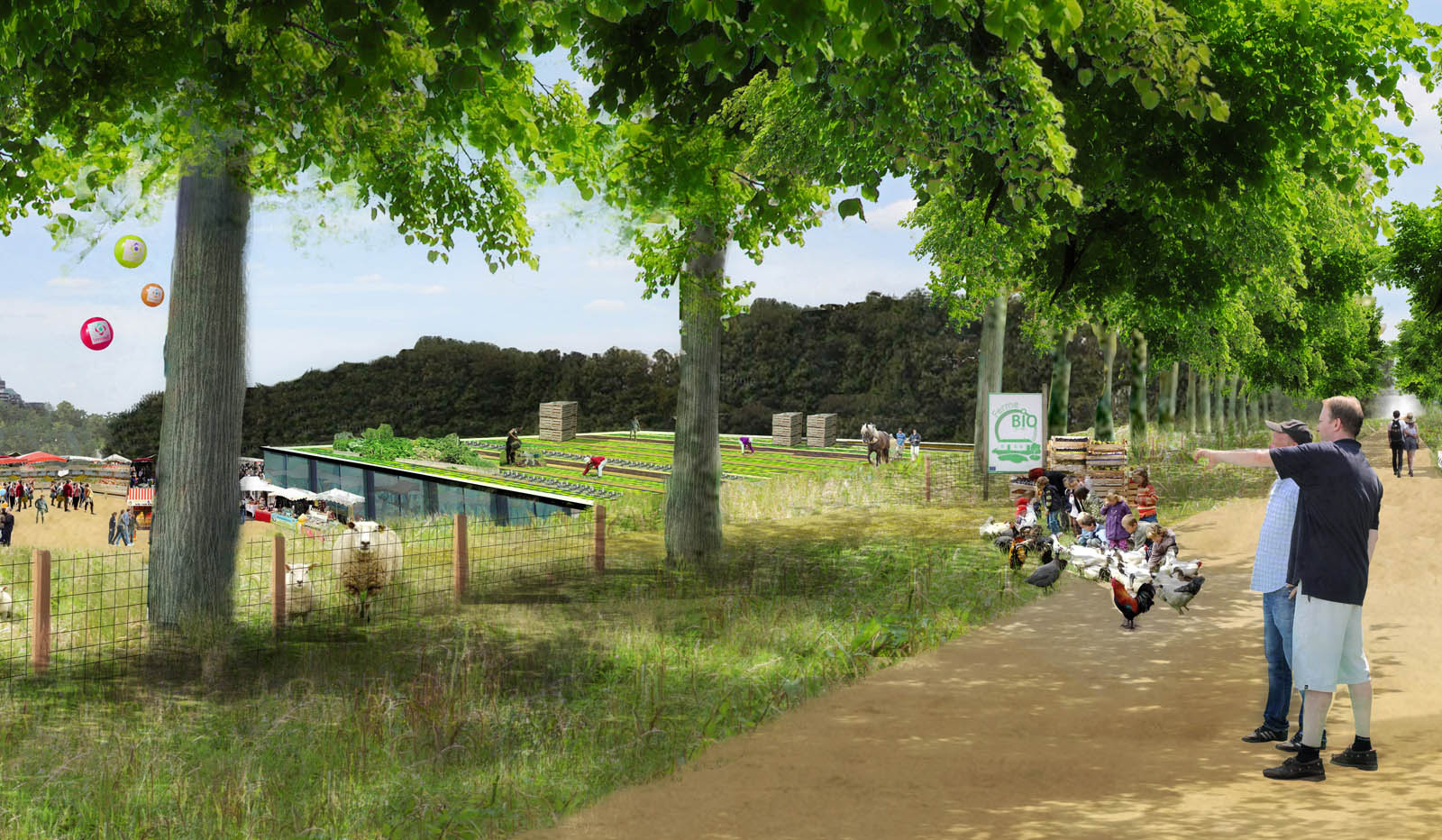Grappling with the urban in landscape design
Downloads
DOI:
https://doi.org/10.7480/spool.2018.1.1942Keywords:
Metropolitan Landscapes, Bureau Bas Smets & List, Brussels, urban design, landscape design, design methodologyAbstract
On January 2016, a joint consortium of the Flemish and Brussels Chief Architects published Metropolitan Landscapes. Espaces ouvert, base de développement urbain/Open ruimte als basis voor stedelijke ontwikkeling. Based on the assumption that open spaces have the potential to spur and structure future urban development and surpass administrative boundaries, Metropolitan Landscapes presents research by design, authored by four prominent design firms with the intention of jumpstarting conversations about a shared spatial vision for the fragmented territory of Brussels and its periphery. In this article, we examine the methodology and definitions put forth by Bureau Bas Smets & List, explore the historical context that has rendered the landscape approach so promising in Brussels, and perform a thematic and critical reading of the four projects and their underlying rationale. These projects demonstrate the potential of landscape to engender novel territorial solutions. However, by choosing to ignore competing spatial claims and tending towards a techno-managerial rationale based on infrastructural and ecological systems, these designs raise questions as to the capacity of the landscape approach to deal with everpresent socio-political concerns in Brussels.
How to Cite
Published
License
Copyright (c) 2020 SPOOL

This work is licensed under a Creative Commons Attribution 4.0 International License.

References
Amin, A. (2014). Lively Infrastructure. Theory, Culture & Society, 31(7–8), 137–161.
Bélanger, P. (2013). Infrastructural ecologies: Fluid, biotic, contingent. In P. Bélanger (Ed.), Landscape Infrastructure. Case Studies by SWA. (Second and Revised Edition) (pp. 20–27). Basel, Switzerland: Birkhaüser Verlag.
Bélanger, P. (2016). Landscape as Infrastructure: A Base Primer. New York, NY: Routledge.
Borret, K. (2017). Personal Interview, July 6. Brussels.
Brasseur, N. (1979). An Urban Renovation Experience in the Center of Brussels: The Manhattan Plan. In D. Appleyard (Ed.), The Conservation of European Cities (pp. 98–103). Cambridge, MA: MIT Press.
Bureau Bas Smets, & List. (2016). Quel “metropolitan landscape” pour Bruxelles et sa périphérie? Welk “metropolitan landscape” voor Brussel en de rand? In J. Mabilde, E. Vanempten, S. Devoldere, & C. Oosterlynck (Eds.), Metropolitan Landscapes. Espace ouvert, base de développement urbain (pp. 42–57). Brussels: Vlaams Bouwmeester.
Corijn, E., Loeckx, A., & Persyn, F. (2016). Metropolitan landscapes: 9+1 maal anders kijken, een kritische commentaar door de externe experten/Metropolitan landscapes: regarder autrement 9+1 fois, un commentaire critique par les experts externe. In J. Mabilde, E. Vanempten, S. Devoldere, & C. Oosterlynck (Eds.), Metropolitan Landscapes. Espace ouvert, base de développement urbain (pp. 171–187). Brussels: Vlaams Bouwmeester.
Czechowski, D., Hauck, T., & Hausladen, G. (2014). Revising green infrastructure: Concepts between nature and design. Boca Raton , FL: CRC Press.
Dejemeppe, P., & Périlleux, B. (2012). Brussels 2040. Brussels: Brussels Hoofdstedelijk Gewest.
Demey, T. (1992a). Bruxelles: chronique d’une capitale en chantier. 2: De l’Expo ’58 au siège de la CEE. Bruxelles : Legrain.
Demey, T. (1992b). La Ville aux Cent Comites d’Habitants. In T. Demey (Ed.), Bruxelles: chronique d’une capitale en chantier. 2: De l’Expo ’58 au siège de la CEE (pp. 281–321). Bruxelles: Legrain.
Dikeç, M., & Swyngedouw, E. (2017). Theorizing the Politicizing City. International Journal of Urban and Regional Research, 289374(289374), 2–18. https://doi.org/10.1111/1468-2427.12388
Doucet, I. (2015). The practice turn in architecture : Brussels after 1968. Surrey, England: Ashgate.
Hausladen, G. (2014). Problems of the Odumian Theory of Ecosystems. In D. Czechowski, T. Hauck, & G. Hausladen (Eds.), Revising Green Infrastructure (p. 449). Boca Raton, FL: CRC Press.
Latour, B., & Weibel, P. (2005). Making things public: atmospheres of democracy. Cambridge & London: MIT Press.
Leloutre, G. (2009). Revisiting the modern project for Brussel: an observatory for metropolisation. In B. De Meulder, M. Ryckewaert, & K. Shannon (Eds.), 5th international PhD seminar Urbanism & Urbanization: Transcending the discipline. Urbanism & urbanization as receptors of multiple practices, discourses and realities (pp. 173–192). Leuven.
LOLA Landscape Architects, Floris Alkemade, & Grontmij. (2016). L’infrastructure en tant que paysage dans le nord de la zone canal/Infrastructuur als landschap in de noordelijke kanaalzone. In J. Mabilde, E. Vanempten, S. Devoldere, & C. Oosterlynck (Eds.), Metropolitan Landscapes. Espace ouvert, base de développement urbain (pp. 112–131). Brussels: Vlaams Bouwmeester.
Mabilde, J., & Vanempten, E. (2016). Le paysage métropolitain en tant que coalition. Metropolitaan landschap als coalitie. In J. Mabilde, E. Vanempten, S. Devoldere, & C. Oosterlynck (Eds.), Metropolitan Landscapes. Espace ouvert, base de développement urbain (pp. 10–16). Brussels: Vlaams Bouwmeester.
Marcinkoski, C. (2014). The City That Never Was: Engaging Speculative Urbanization through the Logics of Landscape. In Revising Green Infrastructure: Concepts Between Nature and Design (pp. 47–70). Boca Raton, FL: CRC Press.
McLeod, M. (1987). On Criticism. Places, 4(1), 4–6.
Metzger, J., Allmendinger, P., & Oosterlynck, S. (2015). Planning against the political. democratic deficits in European territorial governance. New York, NY: Routledge.
Picon, A., & Thom, M. (1992). French architects and engineers in the age of enlightenment. Cambridge, MA: Cambridge University Press.
State, P. F. (2004). Brusselization. In Historical Dictionary of Brussels (Historical, pp. 51–52). Lanham, Toronto, Oxford: The Scarecrow Press.
Swyngedouw, E., & Baeten, G. (2001). Scaling the City: The Political Economy of “Glocal” Development - Brussels’ Conundrum. European Planning Studies, 9(7), 827–849. https://doi.org/10.1080/09654310120079797
Swyngedouw, E., & Kaika, M. (2014a). Radical urban political-ecological imaginaries: Planetary urbanization and politicizing nature. Dérive, 55, 15–20.
Swyngedouw, E., & Kaika, M. (2014b). Urban Political Ecology. Great Promises, Deadlock… and New Beginnings? Documents d’Analisi Geografica, 60(3), 459–481. https://doi.org/10.5565/rev/dag.155
Tonkiss, F. (2013). Cities by design: the social life of urban form. Cambridge & Malden MA: Polity Press.
Waldheim, C. (2006). The Landscape Urbanism Reader. New York, NY: Princeton Architectural Press.
Waldheim, C. (2016). Landscape as urbanism: A general theory. Princeton and Oxford: Princeton University Press.
WIT Architecten, OSA Onderzoeksgroep, Annabelle Blin, & Philip Stessens. (2016). Le paysage aquatique du sud de la vallée de la Senne/Het waterlandschap van de zuidelijke Zennevallei. In J. Mabilde, E. Vanempten, S. Devoldere, & C. Oosterlynck (Eds.), Metropolitan Landscapes. Espace ouvert, base de développement urbain (pp. 58–77). Brussels: Vlaams Bouwmeester.



